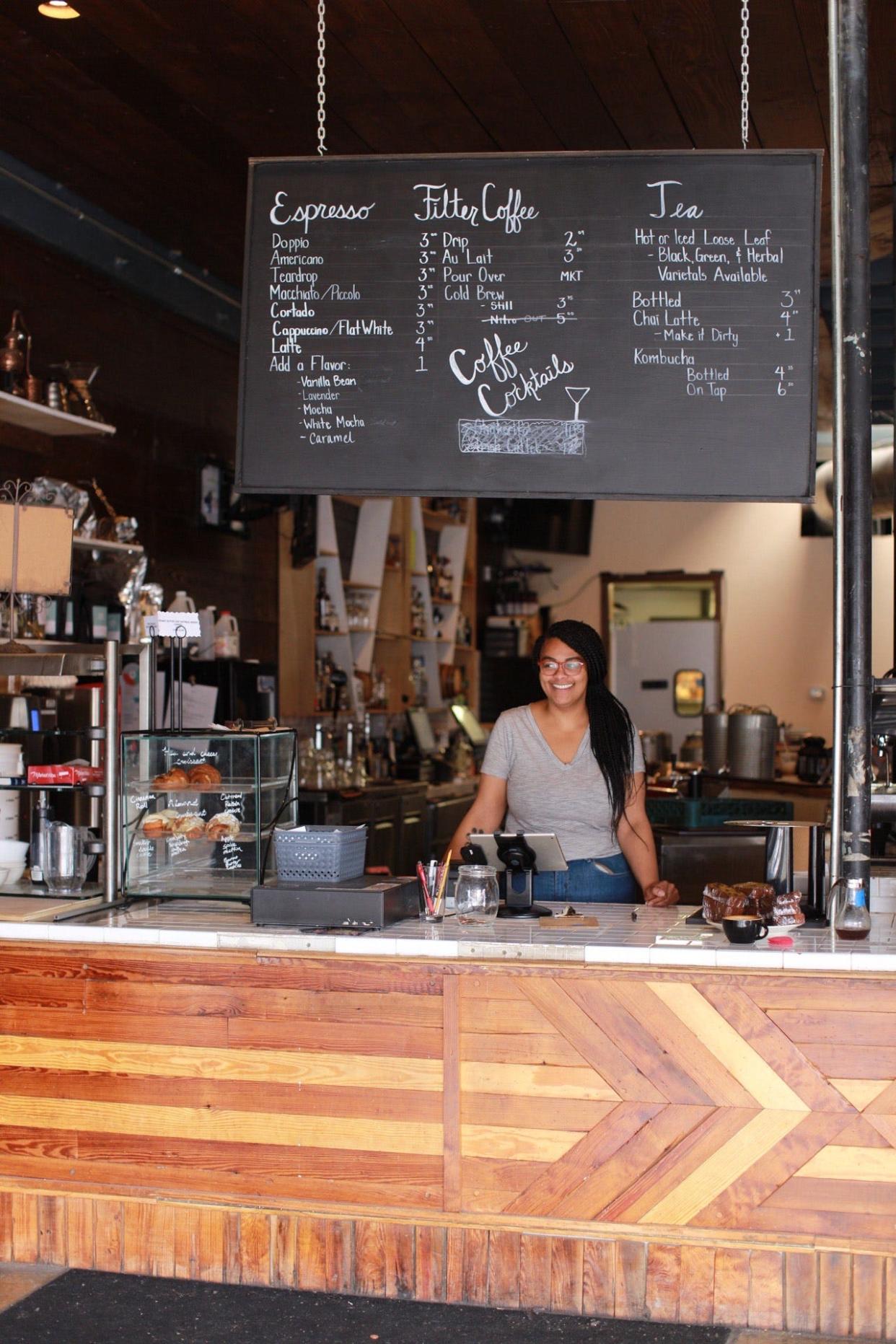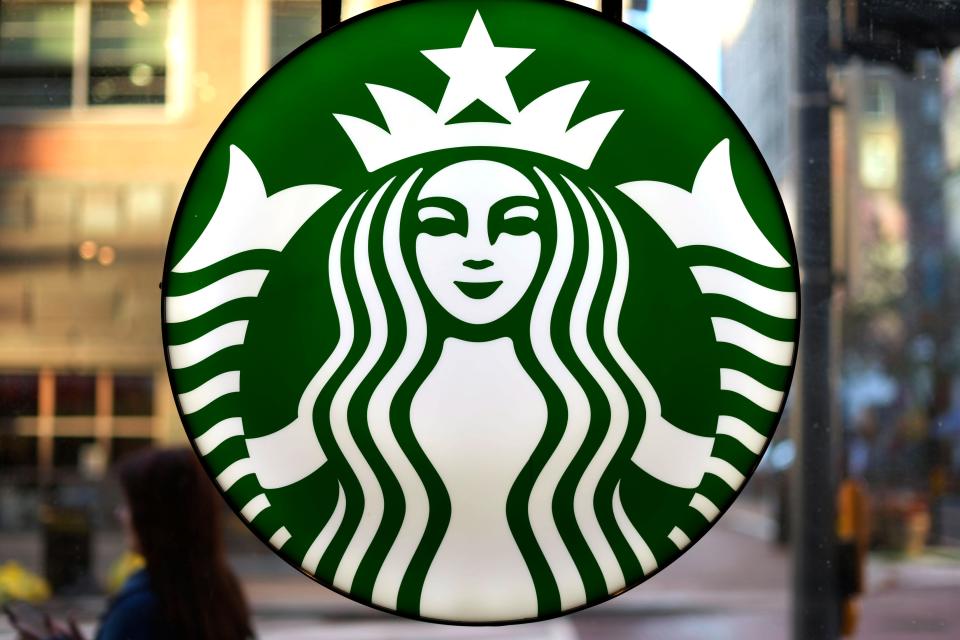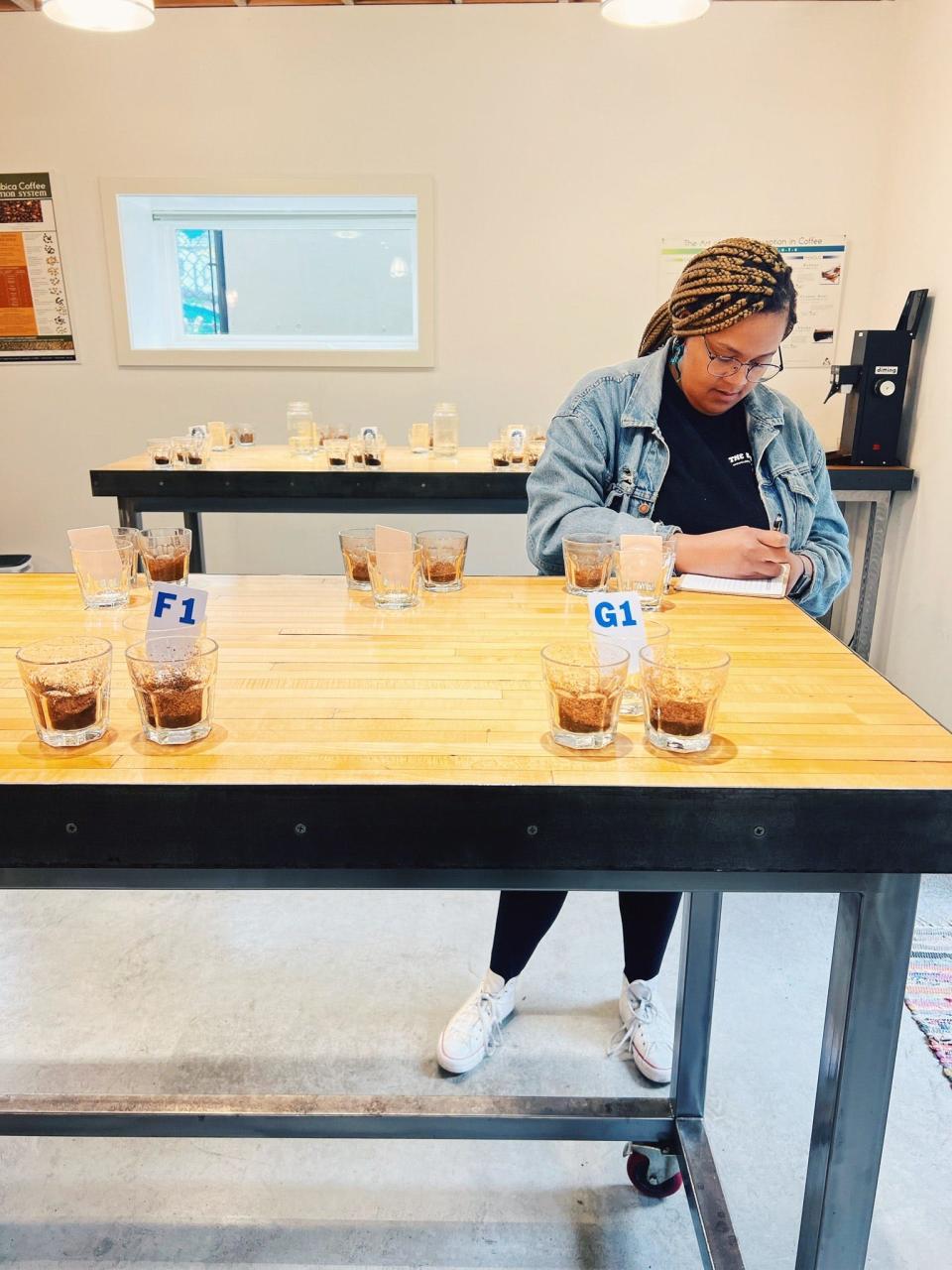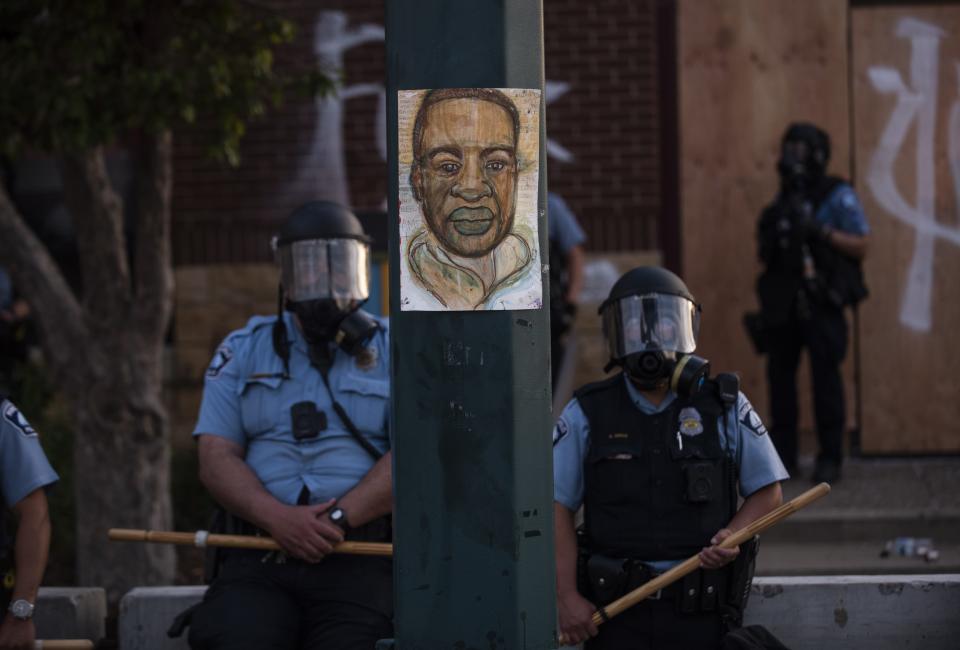'The opportunities are gatekept': Coffee shops continue to fall short on diversity

The nation’s largest coffee brand joined the ranks of companies pledging to increase diversity in the aftermath of the murder of George Floyd by Minneapolis police.
Starbucks set a goal of 30% people of color at all corporate jobs and 40% in every retail and manufacturing role by 2025.
Two years later, the company’s own workforce demographic reports show there is still much progress to be made: Less than half of all roles reported by the company had reached the goal by 2022.
Black representation was particularly low. From 2020 to 2022, Starbucks’ own numbers show no change among baristas and shift supervisors and less than a 1-percentage-point improvement among store managers. Starbucks reported only a 1-point gain for regional VPs, the top retail position.
Opportunities for advancement are uneven across industry
Coffee has been entangled with racism since the 18th century, when colonizers established coffee plantations in the Caribbean and elsewhere that depended on slave labor. And today, a majority of coffee is still grown and harvested internationally by low-income people of color.
The U.S. coffee business is disproportionately white. From the trade business to boardrooms to baristas behind the counter, people of color can be hard to find, said Phyllis Johnson, founder of the Coffee Coalition for Racial Equity.
“When you look at a consuming country, oftentimes what you see is such a small representation of what coffee is,” Johnson said. “A lot of the opportunities are gatekept.”
Starbucks and Caribou Coffee worker demographics were about on par with the rest of the country in recent years, according to diversity statistics all federal contractors must file and that became public for the first time this spring after a yearslong legal battle by Reveal from The Center for Investigative Reporting.
For every one Black Starbucks worker in 2021, there were six white employees, and the Minnesota-based chain Caribou Coffee reported the same 1-to-6 ratio in 2020. Despite being headquartered in the multicultural San Francisco Bay Area, Peet’s Coffee was less diverse, employing eight white workers for every one Black employee in 2019, the latest numbers available for that company from the federal data.
About half of Peet’s Coffee’s workers identified as a racial minority as of June, said Mary O’Connell, head of communications at the company, higher than their 36% share among all U.S. jobs but far lower than the 71% nonwhite population of the East Bay’s Alameda County, where both the original Peet’s and its corporate offices are located.

Starbucks is on track to reach its goal by 2025 and will continue to publish annual updates, said Danielle Winslow, social impact communications manager for the company. She said that its employees – Starbucks calls them “partners” – are at the center of the company and that it prioritizes creating opportunities for its minority employees.
“At Starbucks, our goals around inclusion and diversity are not simply metrics – it’s a mindset,” she said.
Caribou Coffee did not respond to requests for comment.
Keith Hawkins, who is Black, founded the Color of Coffee Collective in 2021 to combat the lack of diversity and equity in specialty coffee. Before that, the U.S. Army veteran spent years working at a local coffee shop and later almost two years at Starbucks, where he said he repeatedly watched as white co-workers with less experience were promoted ahead of him.
“Regardless of what I knew, regardless of how much I poured into the industry, I came to the real realization that most of these companies only wanted certain people, specifically blond hair and blue-eyed white men, to represent them when it came to spaces of negotiating deals,” Hawkins said.
A Starbucks employee who asked to be identified only by her first name said she has not seen any improvement in recent years. Sunny has been a barista at multiple Starbucks locations in Texas for a decade. In that time, she said, she abandoned her ambitions of being promoted to shift supervisor or store manager after repeatedly being passed over.
“At the beginning of me signing on they told me … that we’re a company that is really big in promoting from within,” she said. “I am living proof that that’s not true.”
Representation in leadership tends to be low
What diversity exists in the coffee industry tends to congregate in lower-level, lower-wage positions. Typically, the disparities grow wider up the corporate ladder.
“The problem exists in decision-making roles and opportunities,” Johnson said.
Lack of diversity is a chronic problem across corporate America, where white men hold a disproportionate number of executive positions.
The Starbucks C-suite breaks some from this trend: There were 12 Starbucks executives of color out of 45 in 2021, six of them Black. Although women outnumber men almost 3 to 1 among service workers like baristas, their representation is half that amid executives, and 21 of the 27 women in the C-suite are white.
At Peet’s Coffee’s in 2019, 82 executives were white; just 13 were people of color, including three Black executives. Caribou Coffee reported one Black executive in 2020 and no women of color out of 15 total.And at Starbucks, a close-up look shows the improvements at corporate offices were mixed for Black employees: More were hired into employee roles and the number of vice presidents almost doubled to match the American workforce, but figures for manager, directors and senior VPs remained virtually unchanged from 2020 to 2022.
A Dig Insights survey of about 300 coffee workers across the country shows the fallout from a lack of promotion opportunities: Fewer than half of respondents who were Black, indigenous or people of color said they would recommend working in the industry.
“It’s incredibly hard to make the leap from barista to a salaried position with a livable wage,” one of the respondents said. “These positions are sometimes gatekept by certification and training that is unaffordable by the common barista. I just hope for a better future with more opportunities.”
Smaller coffee shops don’t show up in the statistics, but Porttia Portis, who has worked in coffee for just over a decade in almost exclusively management roles at local cafes, said she has faced discrimination from not just bosses but also customers.
“More often than not, people did not want to believe that I was the manager,” said Portis, who is Black. “Everyone in the room could tell a customer that I was the most knowledgeable person, that I was the manager, and they would look me dead in my face and be like, ‘I want to talk to someone else.’”

Many baristas will migrate from retailers such as Starbucks or Peet’s Coffee to local cafes in hopes of finding a better environment, Portis said. What they often find instead, she said, are small operations in which ambitions to scale up leave them mirroring the mindsets of their larger competitors.
“A lot of the mentality stays the same throughout the industry, regardless of the shop size,” Portis said. “And I think on a smaller level, you find that there’s a lot more disparity because there’s a lot less checks and balances. Whereas on the larger levels, you’re going to have more DEI programs or diversity initiatives. Whether it’s to meet a quota or not, there’s at least something that exists there.”
Charles Umeano said he has even tried changing cities, moving from coffee shops in Atlanta to New York to Boston. Yet, he said, he kept running into the same roadblocks as Portis and others.
“I’ve watched a lot of very talented baristas of color decide that they don’t want to deal with this anymore,” said Umeano, who is looking for a job in coffee outside retail. “In fact, a lot of them are questioning why I’m still here.”
Promises for change so far unfulfilled
Amid the unrest three years ago, many companies made similar promises in 2020 to increase diversity. But Hawkins said many of those vows to change proved to be more performative than productive.
When a shop near him posted an advertisement on social media calling for volunteers for an online conversation about minority representation in coffee, Hawkins, who has extensive industry experience, responded.
“And then they sent me a message back saying ‘We’ll let you know,’” he said. “I waited for about six months. … I DM’d and said, ‘Hey, are you still having this conversation?’ And it was crickets.”

After calls for change peaked in 2020, Portis said she felt minorities working in coffee were left worse off.
“Performative isn’t even a strong enough word to some degree,” she said.
“As soon as the hype died down, then (there) was a lot of resistance,” Portis added. “Once people started getting hired again, it was just a lot of resentment of, ‘You got hired because you’re the diversity hire, and I really don’t believe that you’re qualified for this job.’ Whereas before, you could at least expect if you did get hired, you knew you were getting hired because you were qualified.”
Johnson is more optimistic about the industry’s potential for improvement.
“I think the thing that will ensure that it continues and gets better is that their customers must demand it; their customers must hold them accountable,” Johnson said. “And sometimes better can mean becoming more aware.”
Because the coffee industry is an intimate and relationship-driven space, Umeano said, hiring tends to be based on whom you know or other areas rife with implicit biases. But for their own success, he said, coffee shops stand to benefit from more diverse hiring practices.
Gender and racially diverse companies tend to outperform those that are more homogenous, which includes reporting additional revenue, studies have shown.
“I think a lot of times people look at diversity as you’re doing a solid to people of color, and I don’t really think that’s the mentality,” Umeano said. “In any situation, you want different heads in the room for creative solutions.”
This article originally appeared on USA TODAY: Starbucks, other coffee shops, fall short on staff diversity pledges

